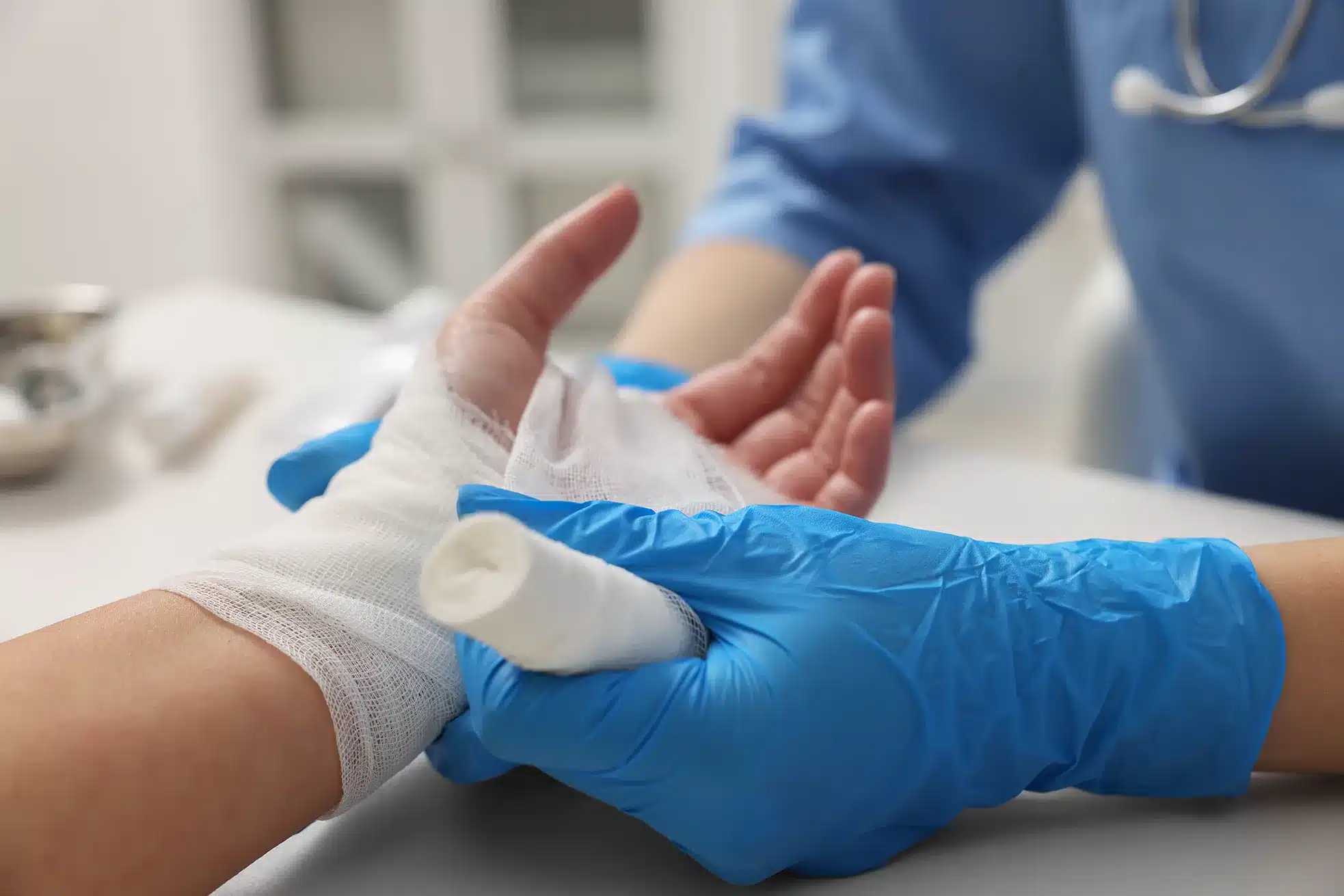
It is recommended that treatment for wounds occur 1–3 times per week. Chronic or complex wounds require close, professional care to heal properly — and to avoid serious complications like infection, amputation, or long-term disability.
Importance of Frequent Wound Care Treatment
1. Wounds Change Quickly
- Wounds can worsen fast — especially if you have diabetes, poor circulation, or a weak immune system.
- Early signs of infection, dead tissue, or delayed healing are often subtle and easy to miss at home.
- Frequent monitoring means small issues are caught before they become dangerous.
2. Professional Treatments Can’t Be Done at Home
- Debridement (removing dead or infected tissue)
- Advanced dressings (antimicrobial, enzymatic, negative-pressure therapy)
- Skin grafts or growth factor treatments
- These need trained staff, sterile technique, and clinical tools.
3. Wound Progress Needs Regular Assessment
- Healing is measured in millimeters per week, not days.
- Wound centers use photos, measurements, and staging systems to track progress and adjust treatment.
4. Stopping Visits Early Can Stall Healing
Even if a wound looks better:
- Infection could still be hiding underneath
- New dead tissue may be forming
- Scar tissue or poor blood flow may prevent full healing
- Missing visits can undo progress and lead to worse outcomes.
Treatment Schedules for Different Wound Types
Infected Wound Treatment
Infected wounds require prompt and consistent care to prevent the spread of bacteria and promote healing. Wound infection treatment typically involve daily wound cleaning with antiseptic solutions, application of prescribed antibiotic ointments or dressings, and regular monitoring for signs of worsening infection such as increased redness, swelling, or discharge. In more severe cases, systemic antibiotics may be prescribed, and wound dressings should be changed at least once daily or as recommended by a healthcare provider. Follow-up appointments are essential to ensure the infection is under control and to adjust treatment as needed.
Chronic Wound Treatment
Chronic wounds, such as diabetic ulcers or pressure sores, demand a structured and long-term treatment schedule tailored to the underlying condition. These wounds often require specialized dressings that promote moisture balance and prevent infection, with dressing changes typically scheduled every 2–3 days or as clinically indicated. Debridement (removal of dead tissue) may be performed regularly, and offloading strategies (e.g., special footwear or cushions) are used to reduce pressure. Ongoing management includes monitoring blood sugar levels, improving circulation, and regular visits to a wound care specialist to track healing progress and modify the care plan as needed.
Deep Wound Treatment
Deep wounds, which penetrate through multiple layers of skin and possibly into muscle or bone, need meticulous care to support healing and prevent complications. Wound treatments are often managed in a clinical setting – involve thorough irrigation, possible surgical intervention, and layered dressing changes performed daily or more frequently depending on the wound depth and drainage. Pain management and infection prevention are critical, and healing progress must be closely monitored through follow-up visits. In some cases, negative pressure wound therapy (NPWT) may be used to accelerate healing.
Open Wound Treatment
Open wounds, including cuts, abrasions, and lacerations, should be treated immediately to prevent contamination. The initial treatment involves stopping the bleeding, cleaning the wound with saline or mild antiseptic, and applying a sterile dressing. The dressing should be changed daily or whenever it becomes wet or dirty. Depending on the wound’s size and location, healing can take from a few days to several weeks. It’s important to watch for signs of infection and to keep the wound protected until a new layer of skin has formed. Minor open wounds can often be managed at home, but deeper or more complex ones may require medical supervision.
FAQs
How many hyperbaric treatments are needed for wound healing?
The number of hyperbaric oxygen therapy (HBOT) treatments needed for wound healing can vary widely depending on the type, severity, and underlying cause of the wound. On average, patients may require between 20 to 40 sessions, with each treatment typically lasting about 90 minutes and scheduled five days a week. Chronic wounds, such as diabetic foot ulcers or radiation injuries, may need a longer course of therapy, sometimes exceeding 40 sessions. The treatment plan is personalized and regularly reviewed by a medical team to assess progress and make adjustments. It’s important to follow the full course of recommended sessions to achieve the best healing outcomes.
What is the appropriate treatment for a deep bleeding wound?
Treating a deep bleeding wound requires immediate and careful action to prevent excessive blood loss and reduce the risk of infection. The first step is to apply direct pressure using a clean cloth or sterile dressing to control the bleeding. Once bleeding slows or stops, the wound should be gently cleaned with saline or clean water to remove debris. If the wound is deep, gaping, or continues to bleed heavily, professional medical attention is necessary – stitches, staples, or surgical intervention may be required. A sterile bandage should be applied, and the wound should be kept clean and dry, with dressing changes as directed by a healthcare provider. In some cases, a tetanus shot or antibiotics may be needed to prevent infection. Prompt treatment and proper wound care are essential for optimal healing and to minimize complications.
How frequently should a wound be monitored?
Wounds should be monitored daily to ensure proper healing and to detect any early signs of infection or complications. For minor wounds, a quick daily check during dressing changes is often sufficient. However, more serious wounds – such as deep, chronic, or post-surgical wounds – may require closer and more frequent monitoring by a healthcare professional, especially in the first few days. Signs to watch for include increased redness, swelling, warmth, pain, unusual discharge, or a foul odor. Regular monitoring allows for timely adjustments to the treatment plan and helps prevent delays in healing. Always follow the guidance of your healthcare provider regarding how often your specific wound should be assessed.
What are the 4 C’s of wound care?
The 4 C’s of wound care, Cleanse, Control, Cover, and Check, are essential steps for promoting healing and preventing complications. Cleanse the wound thoroughly to remove dirt, debris, and bacteria using a gentle antiseptic or saline solution. Control refers to managing bleeding and inflammation, which may involve applying pressure, elevating the wound, or using medications as directed. Cover the wound with a sterile dressing to protect it from infection, maintain moisture, and support the body’s natural healing process. Finally, Check the wound regularly for signs of infection, delayed healing, or other concerns. Following the 4 C’s ensures a systematic approach to wound care that supports faster, safer recovery.
We’re here to help!
Our Wound Care Specialists at Glencoe Regional Health will take good care of you. To schedule an appointment, call 320-864-7040.








